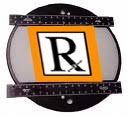Developing your Eye

In Animation, one of the best tools you can have is an eye for what looks right or wrong. Some people can really see the elements that are or are not in a shot. Like any good art form, it takes years to develop an understanding of things. In animation we are usually looking out for good poses and design. There are so many different aspects of animation we need to "see" in our shots. Pose, Polish, Cliche acting, Weight transfer, contacts, arcs, texture, asymmetry... The list goes on and on. So how can a young animator develop his or her eye to recognize such stuff? One way is to look at really well done work and break down the components of what makes it so good. Whenever I see something that catches my eye, I really try to frame through it and understand what is going on. Just recently, I saw a bunch of Aardmann Animation. One thing that really blew me away was how good the facial performances were. They had so much thought process and character. I was grinning from ear to ear watching them. It made me want to look at them again as a student. I think that is the key. We can enjoy a film or cartoon as an audience member, but then you have to look at it with another set of eyes. Look at it again with the eye of an animator.
Another way of developing your eye is to look in everyday life. How people or animals do things. If you can, hang around people that are better than you so they can teach you a thing or two, here and there. Whatever you can do to pick up things. Its very important to grow. Ultimately, you are developing your style and that hawk eye for spotting what is and is not working. It takes time, but like anything good, its worth it.
-Andrew
ps - More splinecasts coming. (Anim Roundtables, Pete Doctor, Doug Sweetland) Bare with us, they take time. Feel free to leave a tip in our tip jar at the bottom of the site to help purchase some better equipment.




